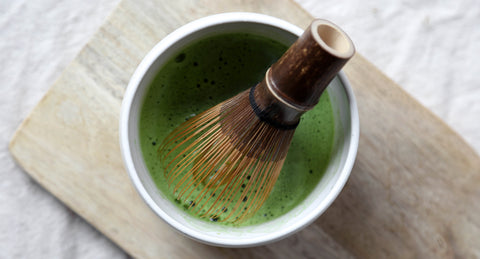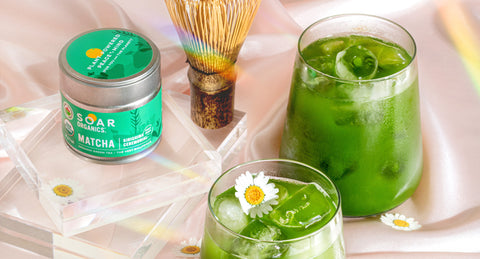Matcha, the finely ground powder of specially grown and processed green tea leaves, is celebrated for its vibrant color, distinctive flavor, and numerous health benefits. However, not all matcha is created equal. Matcha comes in various grades, each with its unique characteristics and uses. The three main grades of matcha are Ceremonial Matcha, Everyday Matcha, and Culinary Matcha. This guide will help you understand these grades, their differences, and how to use them effectively.
Ceremonial Matcha
What is Ceremonial Matcha?
Ceremonial Matcha is the highest grade of matcha, traditionally used in Japanese tea ceremonies. It is made from the youngest tea leaves, specifically chosen for their delicate flavor and vibrant green color. These leaves are meticulously de-stemmed and de-veined before being stone-ground into a fine powder.
Characteristics of Ceremonial Matcha
- Color: Bright, vibrant green due to the high chlorophyll content.
- Texture: Ultra-fine, smooth powder.
- Flavor: Subtle sweetness with a complex, umami-rich taste and no bitterness.
- Aroma: Fresh and vegetal, reminiscent of spring grass.
Uses of Ceremonial Matcha
Ceremonial Matcha is best enjoyed on its own, whisked with hot water into a frothy beverage. Although, some do enjoy the premium quality of Ceremonial Matcha in their lattes.
Everyday Matcha
What is Everyday Matcha?
Everyday Matcha is a versatile grade suitable for daily consumption. It contains a blend of first and second harvest matcha, resulting in a perfect balance between quality and affordability.
Characteristics of Everyday Matcha
- Color: Still a vibrant green, though slightly less intense than Ceremonial Matcha.
- Texture: Fine powder, though not as silky as Ceremonial Matcha.
- Flavor: Balanced, with a mild sweetness and a hint of bitterness.
- Aroma: Fresh and grassy.
Uses of Everyday Matcha
Everyday Matcha is versatile and can be enjoyed as a traditional matcha tea or used in lattes, smoothies, and other beverages. It strikes a good balance between flavor and cost, making it ideal for regular consumption.
Culinary Matcha
What is Culinary Matcha?
Culinary Matcha is the grade intended for cooking and baking. It is made from the more mature tea leaves, which gives it a stronger flavor that can cut through other ingredients in recipes.
Characteristics of Culinary Matcha
- Color: Green, but not as bright as higher grades.
- Texture: Fine powder, though slightly coarser than the higher grades.
- Flavor: More robust and slightly bitter, which becomes a pleasant complement to sweet and savory dishes.
- Aroma: Earthy and vegetal.
Uses of Culinary Matcha
Culinary Matcha is perfect for adding a unique green tea flavor to various dishes and baked goods. It is commonly used in:
- Baking: Cakes, cookies, and pastries.
- Cooking: Sauces, dressings, and marinades.
- Beverages: Smoothies, matcha lattes, and mixed drinks.
- Desserts: Ice cream, puddings, and chocolates.
Choosing the Right Matcha
When selecting matcha, consider the intended use to choose the appropriate grade:
- For a premium tea experience: Opt for Ceremonial Matcha to enjoy its pure, delicate flavors.
- For daily enjoyment: Everyday Matcha offers a balance of quality and cost, suitable for various beverages.
- For cooking and baking: Culinary Matcha provides a strong flavor that complements other ingredients.
Conclusion
Understanding the differences between Ceremonial, Everyday, and Culinary Matcha allows you to select the right matcha for your needs, whether you're looking for a premium tea experience, a versatile daily drink, or a robust ingredient for your culinary creations. Embrace the versatility of matcha and enjoy its unique flavors and health benefits in every form.
By choosing the right grade for the right occasion, you can fully appreciate the rich heritage and delightful nuances of this remarkable green tea powder.



